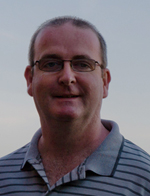Directors of the Computing Section
| Name | Dates | Tenure (yr) |
|---|---|---|
| L. J. Comrie | 1919 - 1922 | 4 |
| A. E. Levin | 1922 - 1928 | 7 |
| T. Whitwell | 1928 - 1930 | 3 |
| A. E. Levin | 1930 - 1934 | 5 |
| J. D. McNeile | 1934 - 1935 | 2 |
| H. W. P. Richards | 1935 - 1936 | 1 |
| A. E. Levin | 1936 - 1938 | 3 |
| J. G. Porter | 1938 - 1959 | 22 |
| C. Dinwoodie | 1959 - 1974 | 16 |
| Gordon E. Taylor | 1974 - 2009 | 36 |
| Sheridan Williams | 2009 - 2014 | 5 |
| Steve Harvey | 2014 - |
The first 50 years
"Computers are born, not made"
By J. G. Porter
The formation of the Computing Section in 1920 was due to a proposal put forward to the Council by Major P. H. Hepburn, as the result of an inspiration by Melotte. An unusually favourable passage of the Sun and Earth through the ring-plane of Saturn was then due and during this time eclipses, transits and occultations of the satellites could be observed. Hermann Struve, of Berlin Babelsberg, who had supplied predictions of the phenomena on the occasion of the previous passage in 1905-1906, died in 1920 August, and Hepburn appealed to L. J. Comrie to supply the necessary predictions. The work proved to be a far greater undertaking than had been expected, and as a result, Hepburn suggested that a Computing Section should be formed, on the lines of the Observing Sections, to share such work. Thus the new Section came into being, and Comrie was asked to assume the Directorship, and organise the members of the new Section.
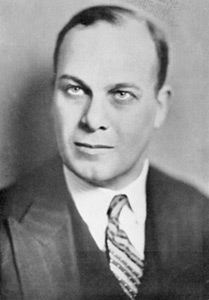
L.J.Comrie
Until 1919 there had been published a Companion to Observatory which contained mainly tabular and ephemeral matter, and which was greatly missed by observers when it ceased publication. Hepburn then proposed that the new Computing Section should make good the loss, and the Handbook thus took shape, appearing for the first time in 1922. Comrie was called to America about this time, and the Section was taken over by Levin, whose skill in computing had already made itself apparent. The subsequent history of the Section may be summarised in the following list of Directors and dates:
L. J. Comrie 1919-1922 produced the first Handbook,1922
A. E. Levin 1922-1928 Handbooks,1923-1928; first Computing Memoir
T. Whitwell 1928-1930 Handbooks, 1929-1930
A. E. Levin 1930-1934 Handbooks, 1931-1935; second Computing Memoir
J. D. McNeile 1934-1935
A. E. Levin 1935-1938 Handbooks, 1937-1939
J. G. Porter 1938 Handbooks, 1940-1944; third Computing Memoir
The Handbook for 1936 was produced by H. W. P. Richards. Although Comrie's name appears but briefly in this list, his influence on the Section remains outstanding, and no praise could be too high for the originality of his ideas, or for the co-operation which he is always willing to give to the Section. As a member of the Handbook Committee, he remained available to render invaluable service to the Association.
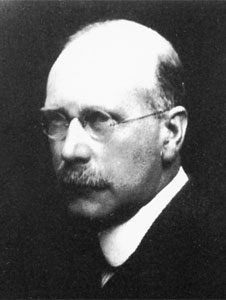
A.E.Levin
Two other names in the list deserve more than passing mention- those of A. E. Levin and J. D. McNeile. Levin was a tremendous worker, and (to quote the writer of the notice in Journal, 50, 78) " . . . it is not too much to say that the very satisfactory condition of the Computing Section today is due to the kindness and courtesy of Levin in teaching potential computers . . . The Handbook, which ranks as a production of primary importance amongst the publications of the Association . . . is accepted with considerable interest at many of the great observatories. It is a very fine piece of work for a body of amateurs, and it is doubtful if many other similar bodies would undertake such a responsibility ".
The good reputation which the Handbook undoubtedly enjoys is entirely the result of Levin's labours. Fourteen Handbooks and two Memoirs stand to his credit, while he must have written hundreds of letters to computers and built up a standard of excellence for the Section for future work. The present writer can testify to the meticulous care with which Levin checked all the work of the Section, especially the proofs of the Handbook. Computing is often a dull and monotonous job, and to work with Levin was often to have dull moments enlivened by his quiet humour, or by some intriguing mathematical problem.
McNeile took over the Section in 1934, after having been for some years in charge of the reduction of occultations observed in this country. His death a few months later was a shock to the Section, but his name will always be remembered by astronomers for his invention of a machine for predicting occultations. This machine is in use at the Nautical Almanac Office, and is fully described and illustrated in the booklet " The Prediction and Reductions of Occultations " (H.M.S.O., 1937.)
From the very early days of the Section, the prediction of the return of periodic comets has been the special pride of the Section. At first this work was in the hands of Dr. Crommelin, who gathered round him a little band of enthusiasts, and made systematic publication of their results. A notable advance in this work was made by the publication of Crommelin's tables (Mem. R.A.S., 64, part 4) which made the computation of the perturbations a more simple and rapid affair. It soon became customary for the announcement of the return of a comet to be given in our Circulars in the form "close to the position given in the Handbook". The most successful computer of cometary ephemerides is F. R. Cripps, whose record in this respect must be unique. Another experienced worker is W. P. Henderson, who has not only been successful in his predictions, but has also been responsible for the instruction of many younger members in this interesting work. An account of the method is given by Henderson in the Third Computing Memoir (B.A.A. Memoirs, 34, part 4).
The change which has taken place in methods of computing, owing to the introduction of calculating machines, has not been without its effects on the Section. The Association owns two of these machines, and several of our members have machines of their own, so that perturbations by the Cowell and Encke methods are a regular part of our programme.
In the early days of the Handbook, predictions of occultations were made for several of the Dominion observatories, but from 1937 this work was taken over by the Nautical Almanac Office. The Section then turned to the reduction of occultation observations, and assisted for some years in the scheme for determining the errors in the Moon's longitude. This work, also, has now been taken over by the N.A. Office, and it becomes increasingly difficult to find work for all those members who wish to do computing work. We were fortunate in 1936, therefore, to have an added interest in the reduction of Meteor observations. In that year, Dr. Davidson published his elegant method for computing the true paths of meteors, and since that time an elaborate programme of work has been undertaken in collaboration with the Meteor Section. Over 2,000 paths have been reduced to date, together with their parabolic orbits, while a good deal of work has also been done on the question of the radiants of meteors produced by periodic comets. Much of this work is as yet unpublished, but the results achieved so far are a great credit to the Section, and particularly to W. F. Townrow and E. Willis, who have been responsible for most of this work. The results have been made the subject of a thorough statistical investigation, and some of the results of this work have been published. The close co-operation between the Meteor and Computing Sections has been of great advantage to both, and the programme of future work is likely to maintain this fortunate state of affairs.
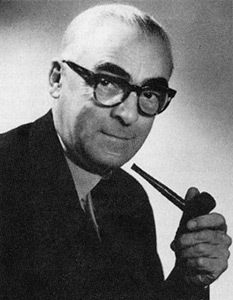
J.G.Porter
When the Handbook was first produced it was concerned mainly with those astronomical facts which the Nautical Almanac did not give, and there existed a sort of agreement that this state of affairs should continue indefinitely. This unsatisfactory arrangement came to an end in 1943, when the whole plan of the Handbook was changed, and amateurs could find all necessary information within the covers of the one publication. The new Handbook was in the nature of an experiment, and it was hoped that members would continue to express views so that further advances might be made in the future. There is much to be done in the direction of double stars, variables, meteors, satellites and methods of observation, and any long-term policy for the Handbook must look forward to the days when paper is no longer restricted, and the Handbook may expand to meet all the wishes of our members.
Two more points remain- first, our appreciation of the friendly interest of the professional astronomer, from whom we derive so much material assistance and helpful advice. Secondly, a word of advice in our turn to the intending computer. Computing is not just a bit of practice with logarithms, for computers are born, not made. No great knowledge of mathematics is required, no long years of training, and (be it whispered !) no degrees. Only one thing is needed- patience ! Patience to stick at the job in your spare time until it is finished- and a comet will take several months of your spare time. You haven't that much patience ?- then don't write to offer your services, please !
The second 50 years
By Gordon E. Taylor
The Director from 1938 to 1959 was Dr J.G. Porter whose extensive mathematical skills were not confined to producing the Handbook. Indeed the Section reduced all the lunar occultation observations by hand and also gave considerable assistance to the Meteor Section. Porter himself played a major part in the controversy surrounding meteor velocities in the 1930s and 1940s. Hoffmeister's suggestion of an interstellar origin for meteors was apparently corroborated by the results of the Harvard-Cornell Meteor Expedition in 1931-33. The analysis showed that nearly 70% of the sporadic meteors were considered to have velocities greater than the parabolic limit. Porter was severely critical of the method of analysis, which adopted certain assumptions, and which he felt were unjustified. By contrast, Porter, from his analysis of visual observations made by the Meteor Section, showed that the velocities were considerably less: in fact a mean value of only 0.67 of the parabolic velocity was obtained for both shower and sporadic meteors. The disagreement was conclusively settled with the introduction of radar methods in the late 1940s. Porter's skill in analysing the meteor observations, demonstrating that meteors were members of the Solar System, was finally vindicated.
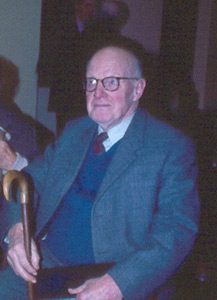
C.Dinwoodie
Porter resigned from the Directorship in 1959 and the next Director was C. Dinwoodie. The number of cometary ephemerides being published in the Handbook continued to increase and Dinwoodie was diligent in training the increasing number of computors required to generate this data. Some older members still used logarithms even though calculating machines had been in use for many years. Pocket calculators were beginning to become available, and in the 1970s programmable pocket calculators were being used to generate cometary ephemerides, as well as other astronomical data.
When Dinwoodie retired in 1974 he was succeeded by Taylor. Changes continued, and all traces of the use of the obsolescent imperial units had disappeared from the Handbook by the 1976 edition (much to the dismay of one or two older members!). All the old hand calculators (Brunsvigas) belonging to the Section were written off, the work being done on pocket calculators and, later on, by microcomputers. Thus the computor was using a computer. The number of pages in the Handbook continued to rise and is currently about three times as many as that in the first edition in 1922. The Section was reorganised so that an Assistant Director became responsible for all the comet work and a separate post of Editor was created. J.V. Carey was the first Assistant Director, to be succeeded by S.W. Milbourn. At this time some of the data were not computed in-house but were obtained from the Nautical Almanac Offices of the UK and USA, and were available several years in advance. Unfortunately these data were arriving later and later so that the Editor, N.J. Goodman wrote many computer programs and currently virtually all the solar, lunar, planetary and satellite ephemerides in the Handbook are generated in this manner.
The need for an Explanatory Supplement to the Handbook had been felt for some years. H.G. Miles, as Assistant to the Director, undertook this onerous task and the Explanatory Supplement was issued in 1988. The impact that microcomputers were having on astronomy was recognised in 1983 by the formation of a separate Microcomputer User's Group which is now part of the Computing Section.
What of the future? There is no doubt that the pace of change is increasing. The Section is currently considering the formation of a Program and Database Library which could be of use to the increasing proportion of our members with microcomputers. Desktop publishing is already here, though not yet a practical proposition for the Handbook: but early next century...?
Gordon E. Taylor
Computing Section Director 1974 - October 2009
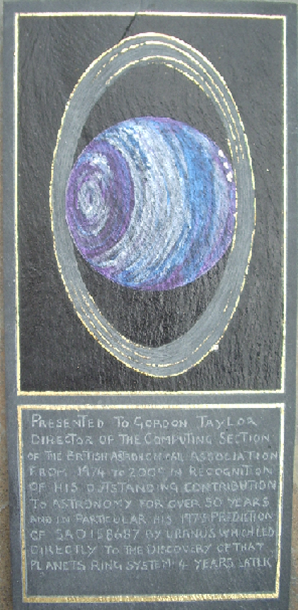
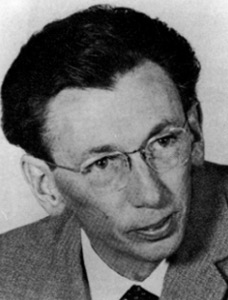
At the October 2009 AGM it was announced that Gordon Taylor, the Association's longest-serving section director stepped down after 36 years in the post. Gordon was elected to the BAA in 1945 and was President from 1968-1970.
In recognition of Gordon's outstanding contribution to the Association he has been awarded a plaque with the inscription:
Presented to Gordon Taylor, Director of the Computing Section of the British Astronomical Association from 1974 to 2009. In recognition of his outstanding contribution to astronomy over 50 years and, in particular, his 1973 prediction of the occultation of SAO 158687 by Uranus which led directly to the discovery of that planet's ring system four years later.
Sheridan Williams
Computing Section Director 2009 - October 2014
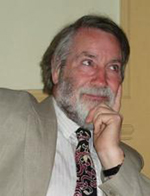
Following Gordon Taylor stepping down as section director, Sheridan Williams was elected to the post.
During his tenure as Director, Sheridan, greatly enhanced the format and layout of the Handbook. He also undertook the monumental task of scanning all BAA journals, Memoirs and Handbooks. and creating an excellent resource by digitising the copies into a searchable set of DVDs. Together with Graham Relf, Sheridan oversaw the overhaul and huge improvement in the Section website.
As a mathematician he provided a lot of data for the BAA Handbook, and now takes an active role in proof reading copies.
He is a Fellow of the Royal Astronomical Society and secretary of the Open University Astronomy Club.
His particular interest is eclipses and has seen more than 11 total solar eclipses. He continues to be the "astronomy expert" for several travel companies including Astro-Expedition and takes groups to witness astronomical events such as eclipses, aurorae and meteor showers.
His career started as a "Rocket Scientist" with the Ministry of Defence using analogue computers. After that He was senior lecturer in computer science at various colleges. Sheridan co-founded BEEBUG - a magazine published for users of the BBC Microcomputer between 1982 and 1994. He also formed a computer company which ran successfully for 20 years before retiring in 2000.
He now does voluntary work at Bletchley Park's National Museum of Computing, and provides computer support to partially sighted members of the RNIB (Royal National Institute for the Blind).

